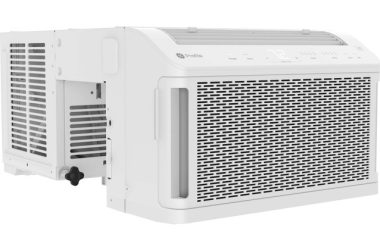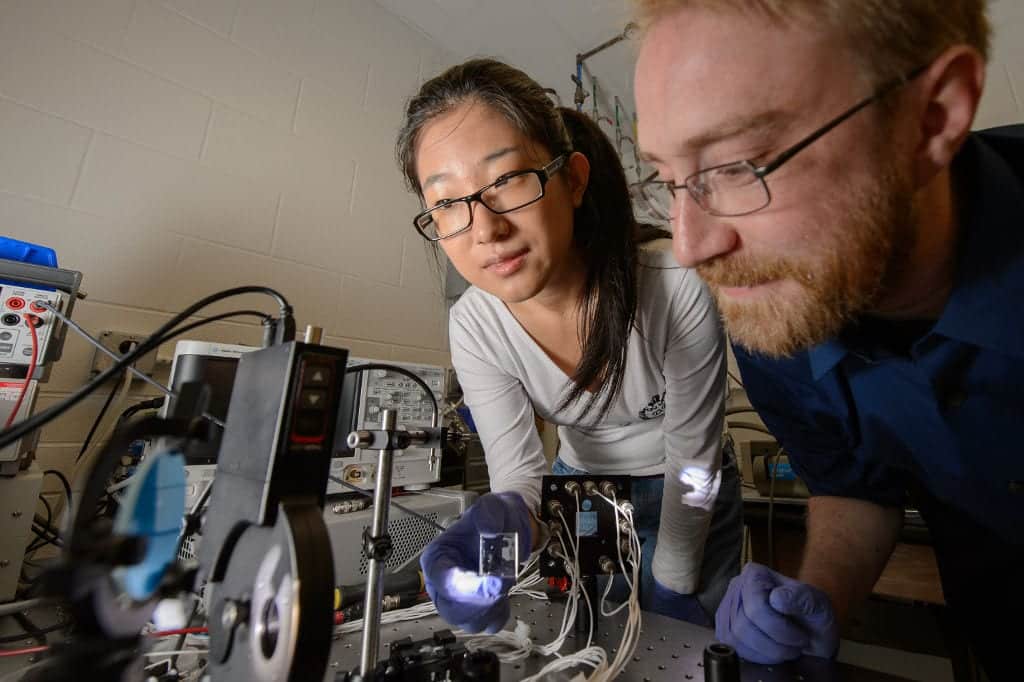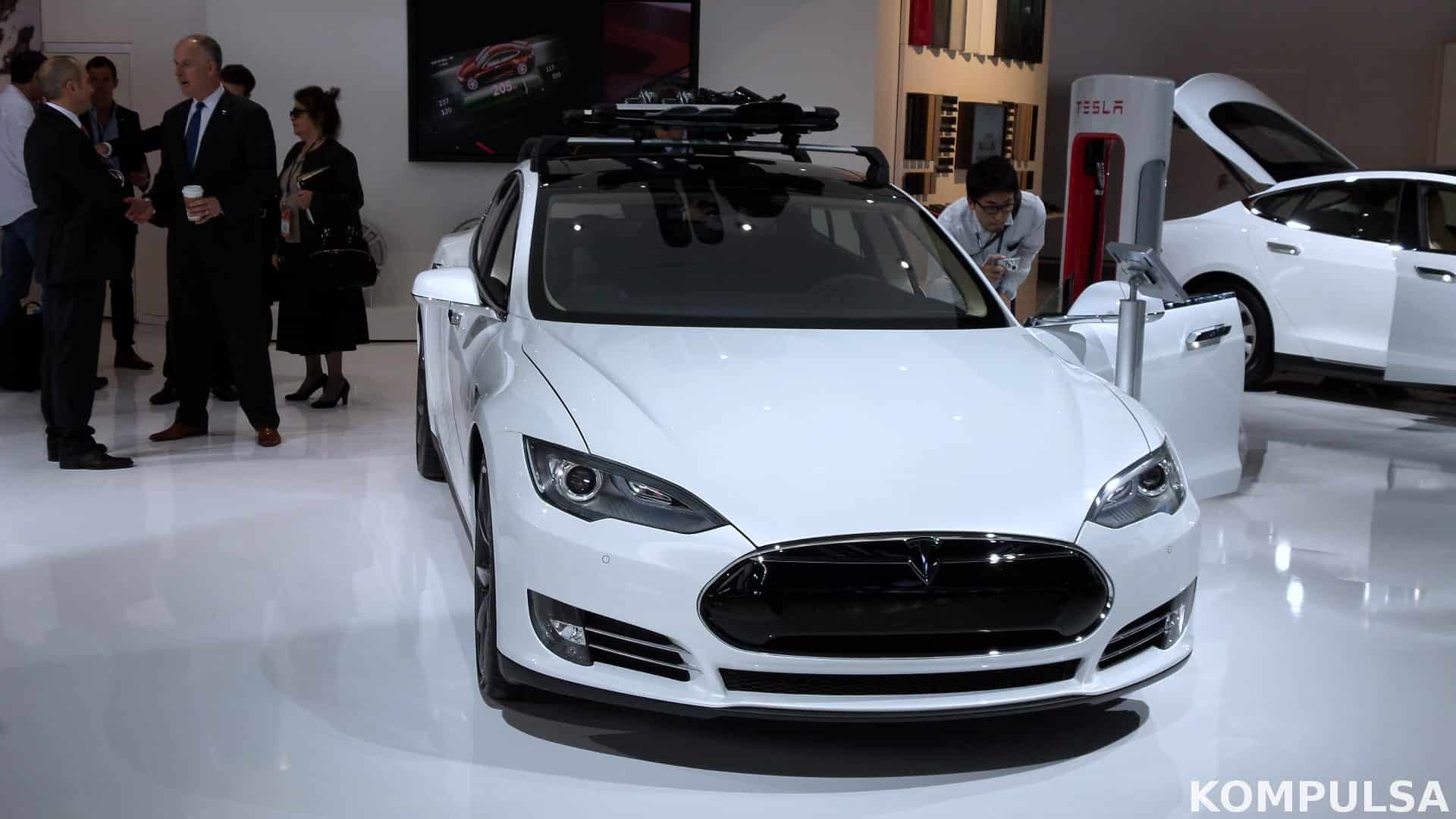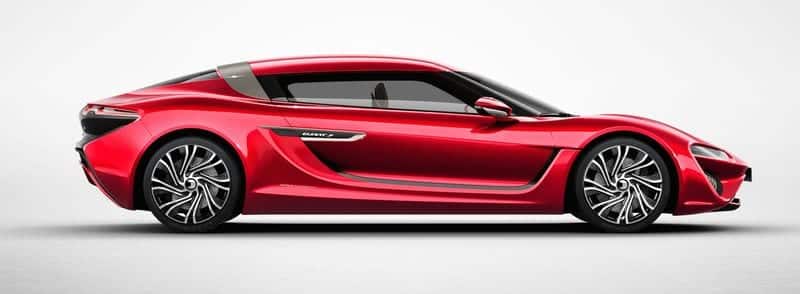Michigan State University researchers have created a photovoltaic solar cell technology which is fully transparent. You may have heard of ‘transparent’ solar panels, but they are not fully transparent (they are coloured), because that isn’t possible. Instead, the ingenious researchers created a transparent plastic solar concentrator called a transparent luminiscent solar concentrator (TLSC) which directs sunlight towards tiny (real) solar cells mounted along the edge of the concentrator. The technology only achieves an efficiency of 1% at the moment, however, the researchers think 5% is attainable.

Image obtained with thanks from Michigan State University.
Sebastian Anthony from ExtremeTech commented:
‘The TLSC consists of organic salts that absorb specific non-visible wavelengths of ultraviolet and infrared light, which they then luminesce (glow) as another wavelength of infrared light (also non-visible). This emitted infrared light is guided to the edge of plastic, where thin strips of conventional photovoltaic solar cell convert it into electricity.’
Compared to a conventional solar cell, which achieves 10% to 22%, this is inefficient. If it achieves 5% efficiency, this solar technology’s incredible versatility would more than compensate for its inefficiency (provided that it is affordable) because it could be integrated into automobile windows, building windows, sun roofs, skylights, tablet PC screens, and more without affecting their appearance.
5% efficiency translates to an electricity generation capacity of 50 watts per square metre of these devices. This means that an average house (with windows about a square metre each) could generate over 300 watts with them on a sunny day!








